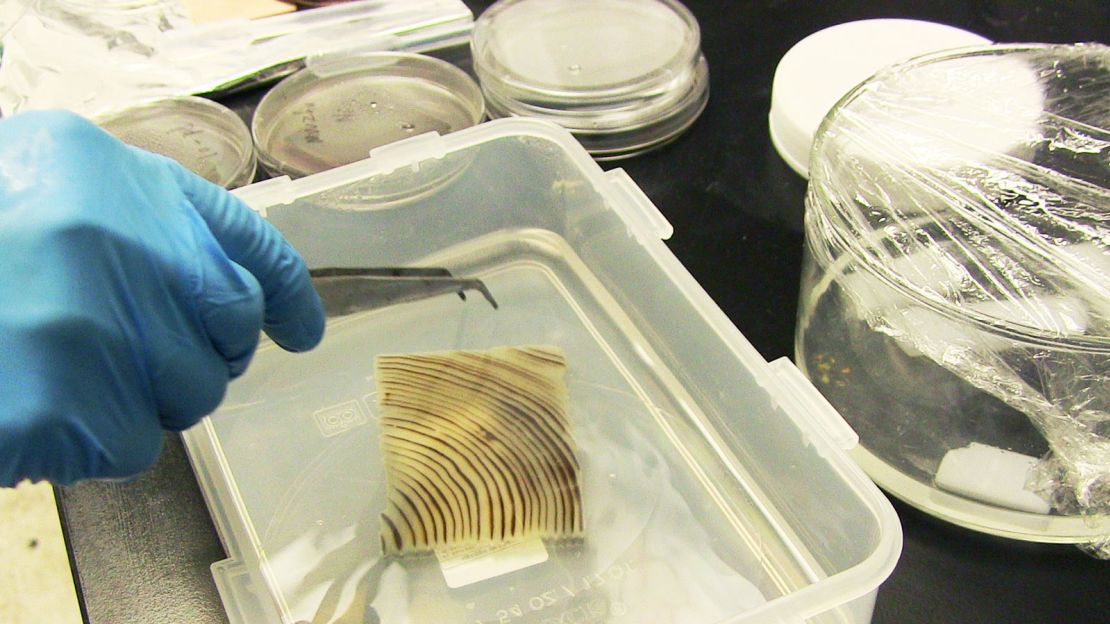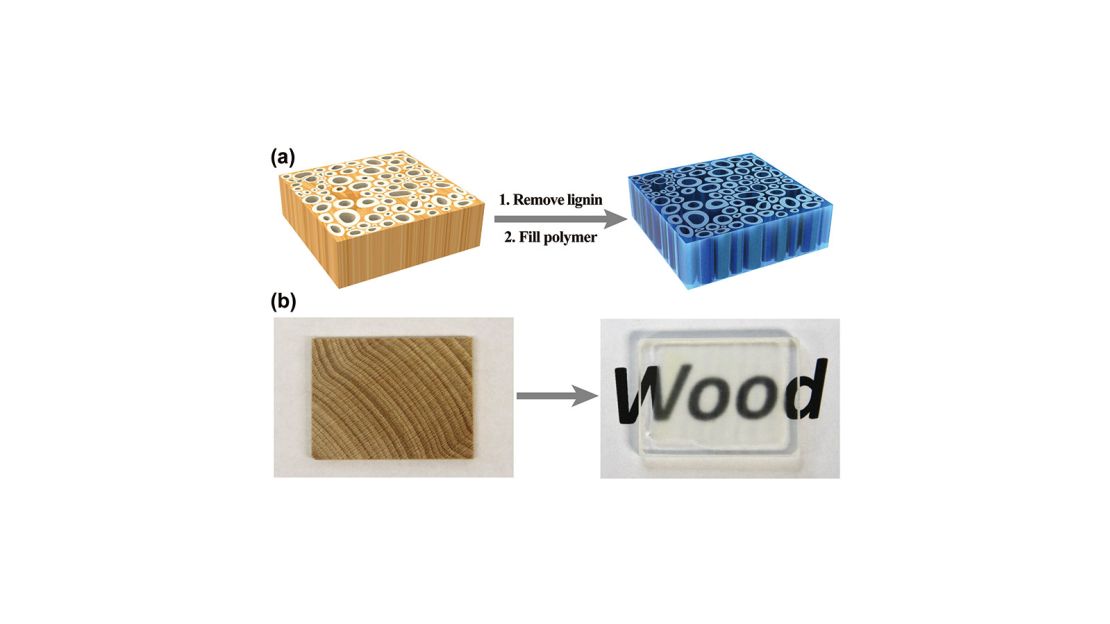Story highlights
Scientists at the University of Maryland, College Park have created transparent wood
The green, see-through material could revolutionize design concepts
Wood has been the building block of some of the world’s greatest architectural feats for thousands of years.
As architects and engineers look for more sustainable, green materials to build with – new research has brought the material back into the limelight, in an entirely unexpected way.
Over the past year, scientists at the University of Maryland, College Park have worked to develop a superior, transparent version of wood.

The “invisible” wood – as Dr. Liangbing Hu of the University’s Department of Material Science and Engineering describes it – is sturdier than traditional wood, and can be used in place of less environmentally friendly materials, such as plastics.
And in a world where modern urban architecture relies heavily on the use of glass and steel, replacing these materials with transparent, biodegradable wood could revolutionize design concepts – as well as reduce heating costs and help to lower fuel consumption.
Related: Why wooden skyscrapers are springing up across the world
How it’s made
Hu describes the process of creating clear wood in two steps: First, the lignin – an organic substance found in vascular plants – is chemically removed. This is the same step used in manufacturing pulp for paper. The lignin is responsible for the “yellow-ish” color of wood.?

The second step is to inject the channels, or veins of the wood by filling it with an epoxy – which can be thought of as strengthening agent, Hu says.
Epoxies are commonly used in adhesives and to reinforce composite materials used for?building.?The process, which takes approximately an hour, is done to maintain the makeup of cellulose nanofibers.?
“These tiny fibers that form the walls of channels, are what makes wood so robust,” Hu explains.
“We don’t disturb these channels – and so for the first time, we can maintain the backbone structure of the wood, and make it transparent, while simultaneously making it stronger.”?

The advantages of ‘see-through’ wood
Implications from the research – published in a report in the scientific journal Advanced Materials – are wide-ranging.
In the immediate future, Hu sees its transparent capabilities as a substitute material to glass.
“Glass windows are a big problem in the summer and winter, they have bad thermal isolation,” Hu explains. As a natural insulator, wood could better insulate from the cold and keep areas cool in hot weather.
The study also reveals that transparent wood composites exhibit high transmittance qualities or a “high optical haze” that could be potentially used in solar cells, which convert the sun’s energy into electricity.
“If you place the transparent wood in front of a solar cell, the amount of light absorbed will be higher, and efficiency can increase up to 30%,” says Hu, of the material’s advanced ability to control and trap how light enters.
Stronger than steel
The material offers large-scale possibilities for architects and engineers, looking for greener building materials.
“Potentially, the wood could be made to match or even exceed the strength of steel per weight, with the added benefit that the wood would be lighter in weight,” explains Hu.
Although not yet in production, recent tests on a small model house with a transparent wood panel in the ceiling built by the team showed that the wood provides better thermal insulation than glass and lets in nearly as much light.
The team are now seeking additional funding to expand their research, and with the numerous commercial inquiries they have received, Hu predicts that transparent wood will be on the market in a few years.
Read: The allure of architecture in the wild
“It’s exciting. And because the material has been used for a long time, there’s already a lot of know-how and manufacturing infrastructure in the wood industry, so this field will develop very quickly.”














